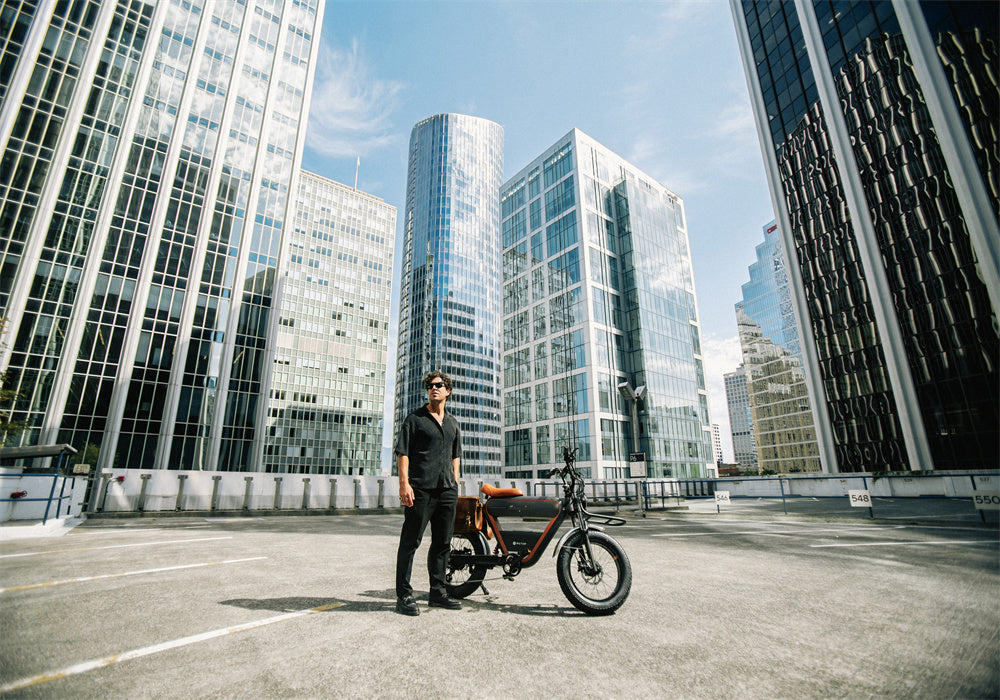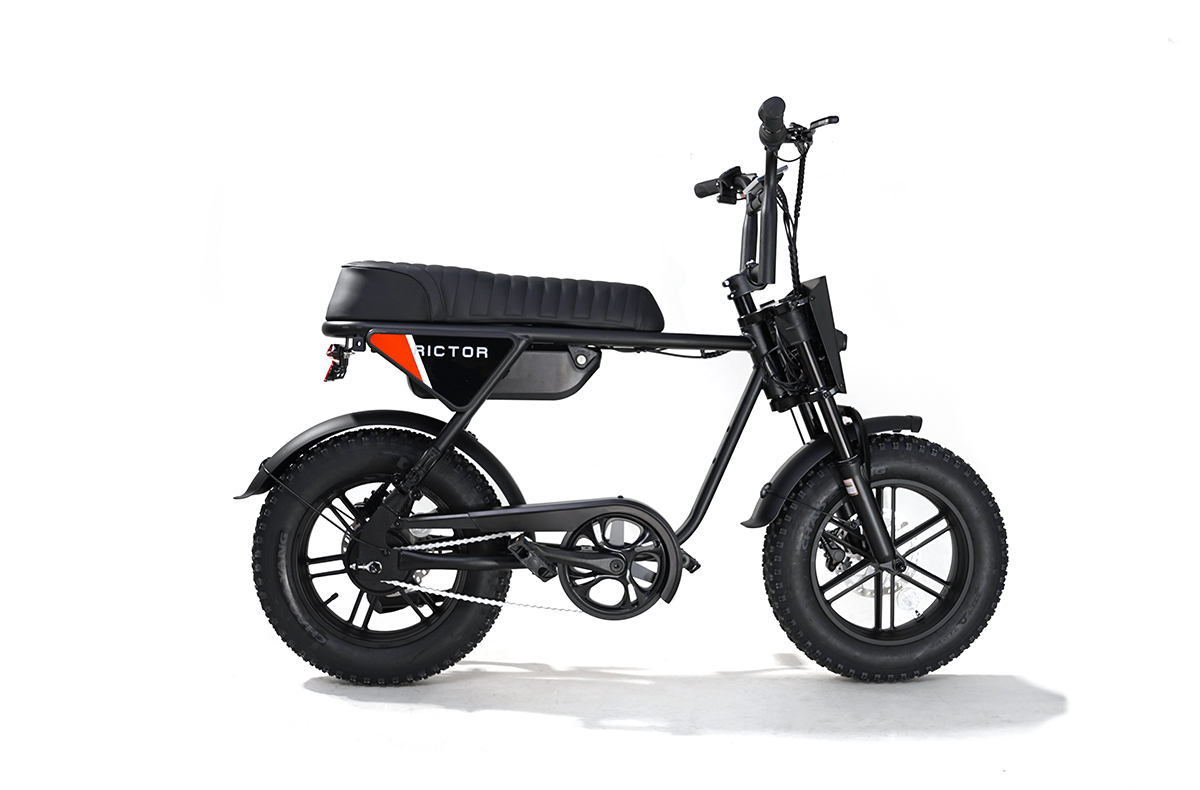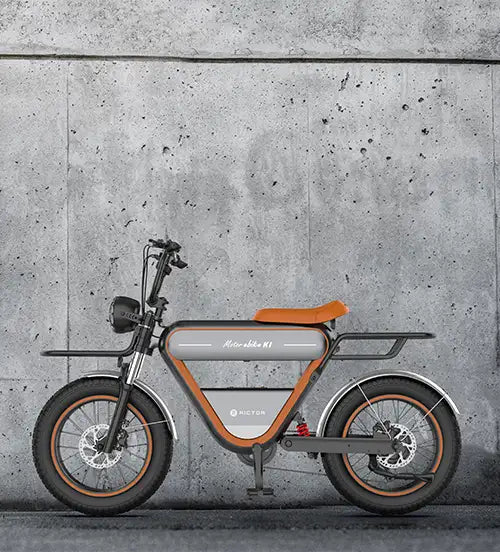
Pedal Assist vs. Throttle E-Bikes: How Do They Differ?
E-bikes today come in two main modes: pedal assist and throttle. While both offer electric help, they work a bit differently. The riding experience on these two types of e-bikes is quite different. In this article, we'll clearly explain the differences between the two, so you can understand how each offers a unique experience on the road.
What Is a Pedal Assist E-Bike
Pedal assist electric bicycles are designed to work with the rider’s pedaling. The motor only kicks in when you pedal, giving you an extra push and making cycling less physically demanding. These bikes use sensors to detect how much effort you are putting into pedaling, adjusting the motor’s assistance accordingly. The more power you put into the pedals, the more the motor will assist you, up to a certain limit, like the Rictor K1 pedal assist electric bike.
Benefits of Pedal Assist E-Bikes
Natural Cycling Experience
Pedal assist bikes offer a more natural and intuitive cycling experience. Since the motor only assists when you pedal, you still engage in physical activity, which can help maintain fitness levels. This makes it ideal for riders looking to incorporate exercise while getting help on tough inclines or longer distances.
Efficient Battery Use
Pedal assist bikes tend to be more efficient with battery usage. Because the motor works in harmony with your pedaling effort, you’ll often find that the battery lasts longer, especially during moderate intensity rides.
Enhanced Control
With pedal assist, you have more control over the level of assistance. Most bikes allow you to adjust the motor assistance level, allowing you to tailor your ride to your specific needs, whether that’s conserving battery life or tackling a steep hill.
Smooth Ride
Since the motor kicks in based on your pedaling power, the transition between electric assistance and pedaling feels smooth and seamless. The motor's help complements your effort rather than completely replacing it, making for a balanced, comfortable ride.
SEE ALSO Rictor K1 All-Terrain Electric Bike: Is it the Ultimate Off-Road Champion of 2024?
What Is a Throttle E-Bike?
Throttle electric bikes are equipped with a throttle that allows the rider to control the motor’s power directly. Just like a motorcycle or scooter, the throttle can be turned to control the motor without any pedaling. You simply twist or press the throttle, and the motor kicks in, providing power to the bike.
Benefits of Throttle E-Bikes
Effortless Riding
Throttle electric bicycles are ideal for those who want a completely effortless riding experience. No need to pedal at all—just twist the throttle, and you’re off. This is perfect for short trips, relaxed rides, or when you need a break from pedaling.
Instant Power
Throttle bikes provide instant power. As soon as you engage the throttle, the motor responds, making it a great option for quick acceleration or when you need to get up to speed fast, like when crossing an intersection or riding on a busy road.
No Physical Effort Required
Unlike pedalassist electric bicycles, throttle ebikes don’t require you to pedal at all. This makes them ideal for individuals who have physical limitations or simply don’t want to engage in any pedaling effort.
Better for Flat Terrain
Throttle ebikes are great for flat terrain where you don’t need the added challenge of pedaling. If you're mostly riding on city streets or level ground, a throttle bike can be an ideal choice for a stressfree commute.
Key Differences Between PedalAssist and Throttle E-Bikes
While both pedal assist and throttle electric bicycles feature electric motors to aid your ride, the way these motors are activated and how they function varies considerably.
Motor Engagement
The most significant difference lies in how the motor engages. With pedal assist, the motor only activates when the rider is pedaling, making it feel more like a traditional bicycle, but with added assistance. On a throttle electric bike, the motor can be activated at any time via the throttle, allowing for power even without pedaling.
Physical Effort
Pedal assist bikes require some physical effort from the rider, as the motor works alongside your pedaling power. This can be a pro for those seeking fitness benefits. Throttle bikes, however, require no pedaling at all, meaning you can coast along without any physical exertion, which some people may prefer for convenience or comfort.
Battery Efficiency
Battery life is often more efficient on pedal assist electric bikes because the motor works in conjunction with your pedaling effort. The bike draws less power overall, especially during steady riding. Throttle ebikes, by contrast, tend to drain the battery faster since the motor works continuously without any input from the rider. As a result, throttle bikes may require more frequent recharging, especially on longer rides.
Control and Flexibility
Pedal assist electric bikes offer more control since you can adjust the level of motor assistance to match your needs. Whether you're climbing a hill or cruising on a flat road, you can change the level of support from the motor. Throttle electric bicycles, on the other hand, offer more immediate control over acceleration but don’t allow for the nuanced adjustment that pedal assist systems offer.
Terrain Suitability
When it comes to handling different terrains, pedal assist electric bicycles are better for mixed terrain, including hills, as they provide an extra boost based on your pedaling effort. Throttle e bikes work best on flat terrain, where you don't have to worry about the challenges of hills and can simply rely on throttle control.
Which One is Right for You
Choosing between a pedal assist and a throttle e bike comes down to your preferences and riding style. If you enjoy the physical activity of cycling but want some assistance on challenging terrain, a pedal assist e bike might be the better option for you. However, if you're looking for a bike that requires no pedaling at all and offers maximum convenience, a throttle ebike could be a perfect match.
Conclusion
Pedal assist bikes provide a more natural, physically engaging ride with efficient battery use, while throttle bikes offer effortless power at the twist of a throttle, making them ideal for those who prefer not to pedal. Whether you prioritize fitness, battery life, or convenience, there's an ebike type that will suit your needs perfectly.
FAQs
Can I convert a pedal-assist bike into a throttle e-bike?
Yes, it’s possible to add a throttle to many pedal-assist e-bikes, though the process may involve purchasing and installing extra parts. Be sure to check with your bike manufacturer for compatibility.
Is a throttle e-bike legal everywhere?
Throttle e-bikes are subject to local laws and regulations, which can vary by region. Make sure to check your local e-bike laws to ensure you're compliant.
How long does the battery last on a pedal-assist e-bike?
The battery life on a pedal-assist e-bike depends on factors like terrain, weight, and level of assistance. On average, a full charge may last between 30 to 60 miles.





